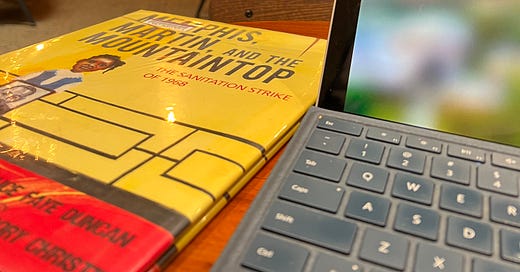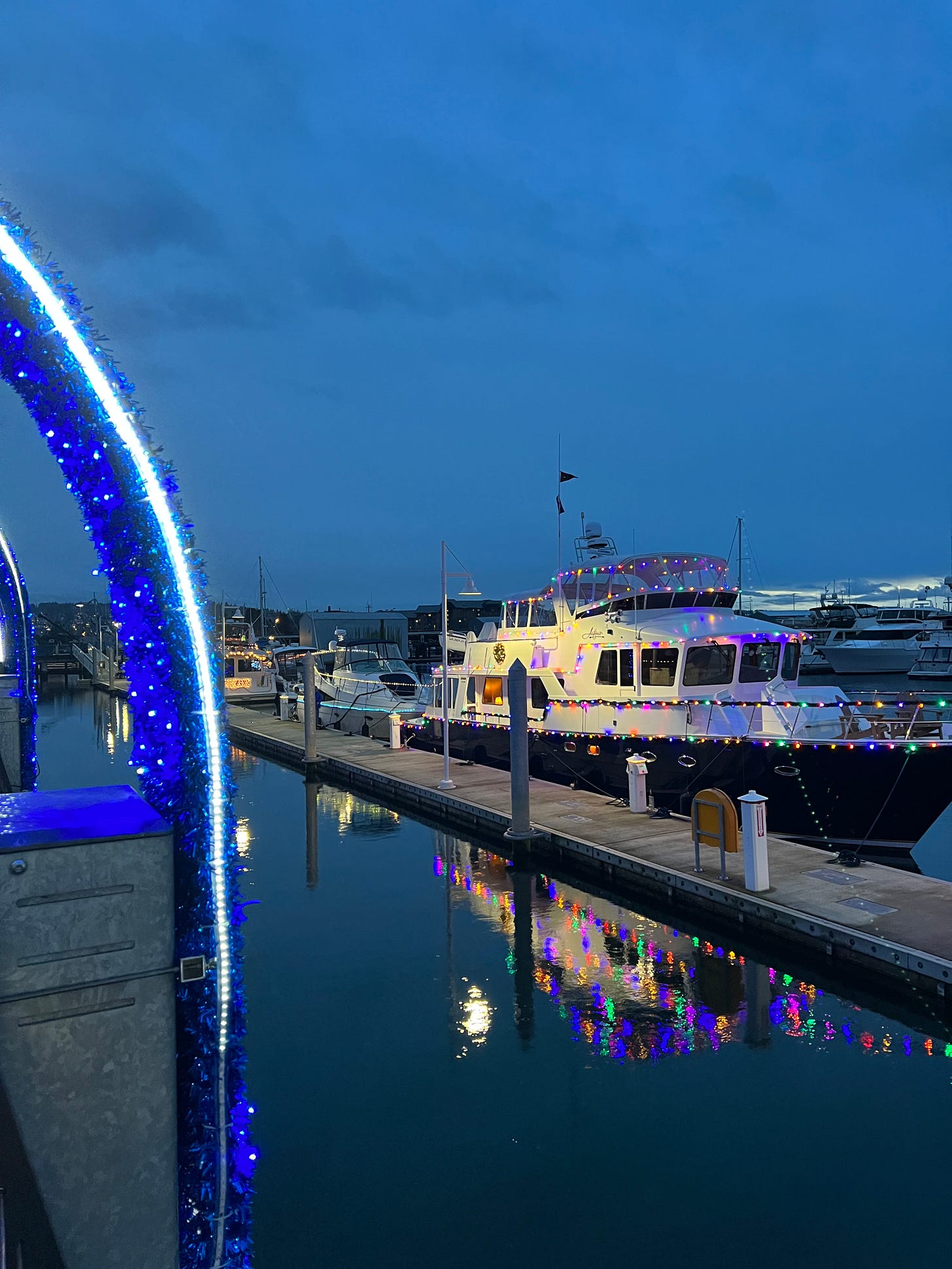A book to read: Memphis, Martin, and the Mountaintop: The Sanitation Strike of 1968 by Alice Faye Duncan, illustrated by R. Gregory Christie
“This is probably a stupid question,” said one of my brightest Senior students, who’d stopped my lecture with a tentative question.
“But what is a labor union?”
Other students threw her a grateful look, glad that someone had been brave enough to interrupt my monologue to ask the question they’d all been wondering.
I mentally kicked myself as I thanked the student for her question and gave the class a quick rundown on labor unions. I have a terrible habit of assuming that my 18-year-olds know everything that I teach my sophomores. Of course, they don’t. A million pieces of history slip through the cracks.
With that in mind, I’m going to beef up my unit on Labor Unions by kicking things off with this picture book. Students always remember when I read them picture books :)
Alice Faye Duncan’s protagonist is nine-year-old Lorraine Jackson, whose father was one of the Memphis sanitation workers making “starvation pay.” When Memphis mayor Henry Loeb refuses to acknowledge the sanitation worker’s labor union, they go on strike. For over two months sanitation workers marched, joined the picket lines, and rolled pennies to pay rent.
And then Dr. Martin Luther King Jr. comes to town. The inclusion of Dr. King is so brilliant in this book because it allows students to see another side of the Civil Rights giant.
“Dr. King set out to abolish poverty in the very same way he had raised his voice to abolish racial segregation. He wanted to strengthen labor laws for all Americans. And to make his dream come true, he planned a massive march in Washington, DC, in the spring of 1968.”
The Beale Street riot, Dr. King’s “I’ve Been to the Mountaintop” speech, and the assassination of Dr. King are all covered in the picture book, which concludes with the end of the sanitation strike.
A place to explore: The end of a street, next to an abandoned storefront.
Although I have been to Memphis, it was to take an audio tour of Graceland, not to visit the National Civil Rights Museum at the Lorraine Motel. Therefore, I had to find a snippet of labor history closer to home.
Gird your loins, because this is going to be exciting!
Can you believe such an exciting spot exists right here in Everett, Washington!?!
That’s right folks. At the end of Hewitt Street, there is a plaque affixed to a rock. Graffiti-covered railroad tracks and industrial docks block water views. Folks in Pennsylvania have Independence Hall, Bostonians have Bunker Hill, and we Everettites have this rock denoting the place of the Everett Massacre. Kind of. The massacre was “just west of here.”
Here is the story: In 1916, the Everett shingle workers went on strike. Pro-union rallies and speeches were frowned upon by local businesses and the pro-business police force.
On November 5th, some 300 IWW (Industrial Workers of the World) workers - also known as "Wobblies," boarded a steamer and took the quick trip north to support their comrades in Everett.
Upon the ship’s arrival, Sheriff Donald McRae and a group of his followers met the ship of Wobblies on the dock and told them they couldn’t land. Shouting followed, and then gunfire. Who shot first? Your guess is as good as mine.
The boat of Wobblies eventually headed back to Seattle, but not before seven men died. Forty or fifty more were injured. The Everett Wobblies carried on with their planned street rally and were consequently rounded up and thrown in jail.
And 107 years later, a history teacher visited a plaque commemorating the spot somewhat near the docks where the whole thing went down.
Then I drove another mile to take a picture of the docks.
This is a bit different than the vibes on November 5th, 1916.
With all this labor writing happening, I opted to not write this Substack in my usual spot at Starbucks, as the NLRB has brought over 100 cases against the coffee chain over anti-union activities. Instead, I headed to Woods Coffee, which was delightful.
A lesson to teach: Labor Union Activism is on the Rise, by Retro Report
Earlier this year I wrote a few lesson plans for Retro Report about labor unions, which can be accessed here. In the lesson, students look at primary sources regarding union membership in America and Britain, then compare the rise of union membership in the 1930s with union movements in the 2020s. The three-day lesson plan goes with a documentary video produced by Retro Report.
A bit about Retro Report: They are a nonprofit organization that creates short documentary videos and classroom resources. I discovered them at the National Social Studies conference last year and immediately started using their videos and resources in my civics class. I was also accepted to be on their 2023 Teacher Ambassador team, which involved attending a few Zoom meetings, using the material in my classroom, completing surveys, and sharing Retro Report Resources. For you teachers that might be interested in serving on the 2024 teacher ambassador team, (there is a $250 stipend!), the link to apply is right here.
Should you be interested in getting all the latest Retro Report news, lessons, and documentaries that are coming up, you can sign up for their newsletter here.






Well done for teaching the kids about labout unions! In the UK, they shaped our history in such remarkable ways. There's a danger that we forget that.
I find it astonishing that high school students don’t know what a labor union is. But why should they? How many places in their world are organized? I admire your refusal to patronize Starbucks. I haven’t been to one in years. Love my local independent coffee shops. It’s a shame that not everyone has that choice.